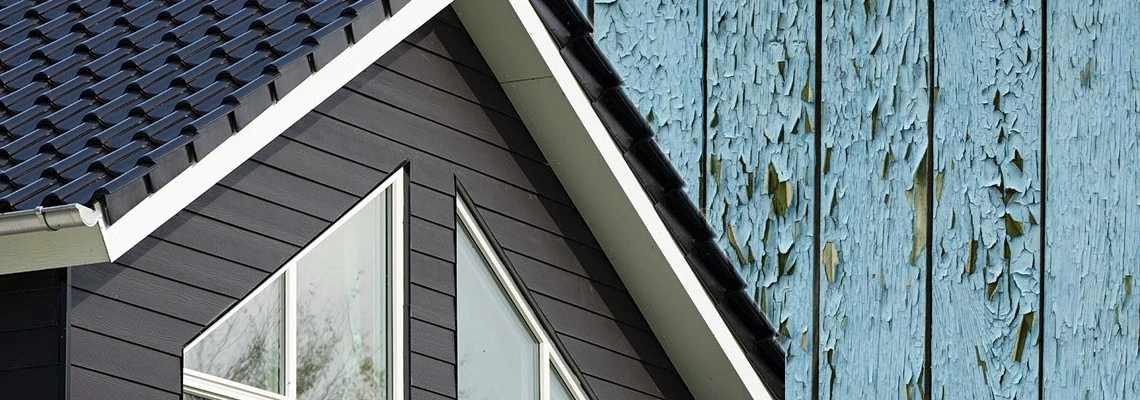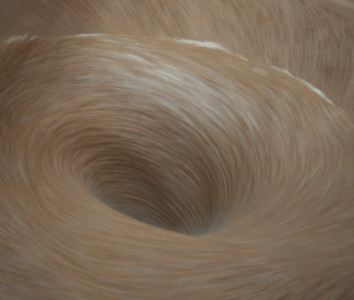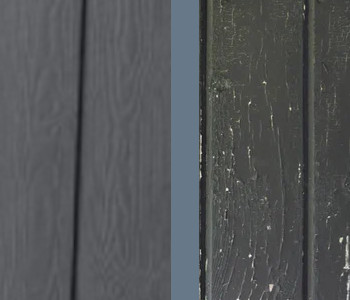
Cedral Weatherboard.
Timeless façade board or temporary solution?*
With the Cedral planks you can beautify your home the way you like it. This is a fact. Woodgrain giving you the same rustic look we love about wood. Our houses are built to last more than a lifetime. This cannot be denied.
That is why when choosing a specific technology, we must be 100% sure this is the best product abavilable on market. The choice of material can not be random - quite the opposite. It is got to be uncomplicated, weather resistant product with guarantee that your façade will be durable for years to come. In the article we will focus on Cedral brand made by Etex.
Is Cedral really built to last? Let's find out
With over 100 years’ experience, Etex has grown from a small Belgian family business into an international industrial group and has perfected the manufacturing of fibre cement building materials. Cedral is designed for homeowners and is committed to build more beautiful homes around the world, to continuously improve existing materials and to drive innovation to generate new products and solutions. Cedral system allow you to replicate the warmth and charm of timber cladding, without the maintenance requirements associated with real timber cladding.
Manufacturer guarantess minimum life expectancy of 50 years – thanks to the multilayer fibre structure.
The secret to longevity turns out to be the fibre cement formulation and structure.
How is it made?
Cedral cladding boards are made of:
- Portland Cement – binds all the ingredients
- Cellulose fibres – sourced from sustainable reserves, act as filter fibres
- Synthetic fibres – used as reinforcing fibres
- Sand – used for its resilience and weather performance
- Water – brings it all together and activates the hardening process of the cement

What Fibre Cement has to offer?
- Fire-resistant – Cedral products are Class 0 and EN 13501-1 fire performance classified to A2-s1, d0 which is one of the best classification ratings that can be achieved.
- Low maintenance-resistant to rot and warping
- Fibre cement doesn’t rot and lasts longer than traditional cladding materials. It doesn’t contain any metals so it won’t rust.
- Thanks to its thermal stability it will not warp or crack under high temperatures.
- Stands up to the harshest weather conditions: resistant to all kinds of weather, from severe frosts and torrential rain to high heat and direct sunlight.
- It has a minimum life expectancy of 50 years.
- Light-weight building material: with the layered production and fibre matrix supporting the cement, fibre cement is thinner than concrete, but has the same performance benefits.
- The characteristics of fibre cement make it ideally suited as exterior wall cladding material.
Cedral - perhaps is just temporary solution?
For sure not!
Cedral boards have a life expectancy of 50 years and is climate engineered to be water resistant and pest resistant. This type of board withstand all weather including high wind loads. All thanks to to the product composition.
The superior characteristics of fibre cement products make them long lasting solution.
Fibre Cement Cedral Cladding vs Timber Cladding
Even the strongest timber cladding will need regular maintenance to continue to protect your home and keep paint from cracking or peeling, which will lead to deterioration of the planks underneath.
Fibre cement is a very low maintenance cladding material and only requires a simple wash with a hose and soapy water, when needed. Fibre cement is also termite resistant which further reduces maintenance and repair costs.
With proper maintenance timber cladding can last for many years, but with wooden materials it is important to minimize the exposure to moisture which can cause rot.
You will need to maintain a finish coat of paint or stain to seal the wood against the elements. Painted wood needs to be repainted every 5 years and stained wood needs to be re-stained every 3 years.

Cedral plank is fade resistant and does not require regular repainting.
It is little bit more expensive to buy, depending on what type of timber alternative you would choose, however factoring in the 50 years life expectancy and the extremely low maintenance, the total cost of ownership of fibre cement cladding will nearly always be lower than that of timber cladding.
No cracking or swelling
Fibre cement doesn’t crack, swell or warp like wood. In fact, product offers up to three times more dimensional stability than wood. With its outstanding moisture resistant properties, unique formulation doesn’t deteriorate if exposed to damp or wet conditions.
That is why cladding has become the popular choice for uplifting the look of your home.
Other Articles:
Cedral Cladding and Frequently Asked Questions
Cedral cladding. Lap or Click?
Fibre cement cladding technology
How to install Cedral Click Cladding
How to install Cedral Lap Cladding
How to clean fibre cement cladding?
Weatherboard Touch Up Paint for Cedral
How much is Cedral cladding per square Metre?
*All the information provided in the content published on Insulationgo blog is for informational and educational purposes only. Insulationgo LTD makes every effort to ensure the accuracy and timeliness of the content, but we do not assume any responsibility for any errors or omissions.
The information presented on this blog should not be considered as professional advice or a substitute for consulting relevant experts. Before making any purchase decisions or taking action based on the information presented here, it is strongly recommended to contact the product manufacturer directly to verify the details and ensure its suitability for your specific needs.
By using this blog, you acknowledge and agree that Insulationgo LTD shall not be held liable for any damages, losses, or inconveniences arising from the use or reliance on the information provided herein. This limitation of liability applies to all users of the blog, including but not limited to visitors, readers, and subscribers.










































































































